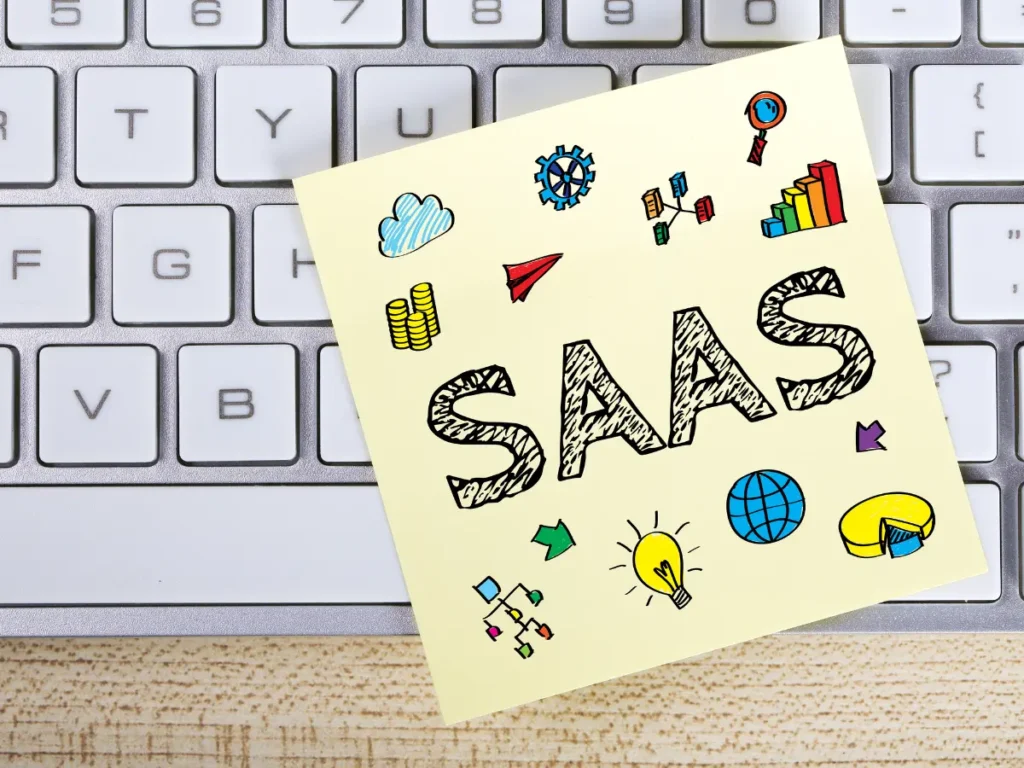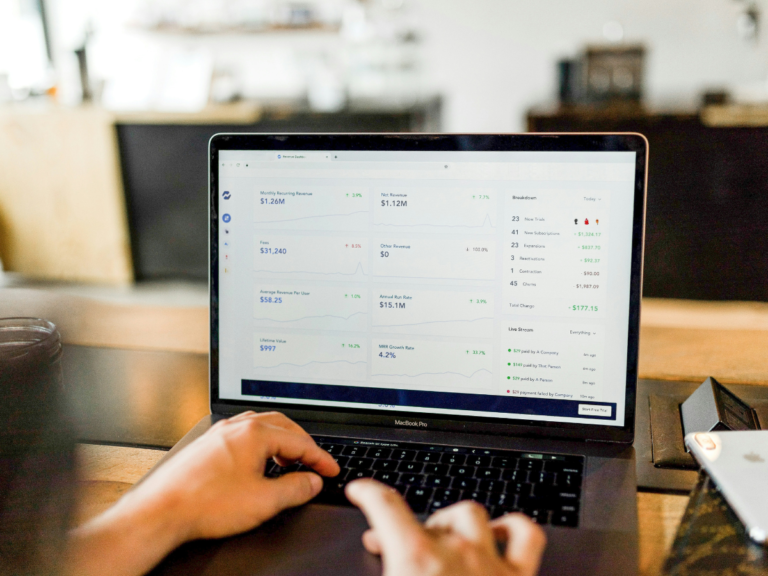
Did you know that 85% of business apps will transition into SaaS-based models in 2025? This means that if your business mobile app doesn’t follow this trend, it could become irrelevant in the coming times. But don’t worry; to stay ahead in the game, all you’ll need to do is learn how to build a SaaS product.
By doing this, you’re guaranteed success in the growing SaaS market. However, building a SaaS product isn’t an easy task. From planning and designing to execution, and a good understanding of the market, every step requires adequate attention to detail.
The goal is simple: build something that solves real problems and drives revenue. But beyond building the product, getting it in front of the right audience is just as important. That’s where SaaS Ads come in—targeted paid ads designed specifically to promote SaaS solutions, generate leads, and scale growth.
In this article, we’ll walk you through how to build a SaaS product, explore the cost involved, the types of SaaS products out there, and how advertising strategies like SaaS Ads can help you reach the right users faster.
But first..
What Is A SaaS Product?
Software-as-a-service (SaaS for short) products are models that are accessible to users over the internet without the need to download them. This product is located on an external server, and the payment is usually made on a subscription basis.
Benefits Of Building A SaaS Product
There are various benefits of SaaS product development, but here are a few we consider:
- SaaS products are scalable. This means that they can accommodate your growing customer base without the need to spend on other software.
- SaaS providers make use of strong security measures to protect users’ data.
- SaaS products foster collaboration between team members.
- SaaS product updates are usually handled by the providers for all users. This is to ensure that the products stay updated with new features and bug repairs.
- SaaS products can be accessed from anywhere in the world.
How To Build A SaaS Product From Scratch
Now that you have an idea of the different SaaS products available on the market, it’s time to know how to build one of these SaaS products from scratch.
1. Validate Your B2B SaaS Product Idea
Validating your SaaS product idea is the first step to consider when learning how to build a SaaS product. Doing this will prevent you from spending your money and time on a product that no one will try out.
There are some steps to consider when validating your product idea. These steps are:
- Conduct Market Research
Conducting market research will help you know if your product is in demand and solves a real problem. It will also help you identify your competitors and current SaaS product development trends you can jump on.
Lastly, carrying out market research will give you insight into the areas in the SaaS market that your product can help with.
- Identify Your Target Audience
With various SaaS products available on the market, not all are widely accepted by users. So, when building your SaaS product, it’s important that you find out who your product is best for.
For you to properly identify your target audience, you’ll have to
- Find out who your product serves
- Their pain point
- Needs and preferences
You can conduct surveys and interviews to find out if your product provides solutions to their problems.
- Analyze The Existing Product
In this step, you’ll need to evaluate the strengths and weaknesses of the already existing product in the market.
Doing this will give you an idea of the features to add or improve in your product in order to stay ahead of your competitors.
2. Plan your SaaS Product Feature
When it comes to building a SaaS product for your business, you must carry out a competitive analysis. This will help you know the features customers want in a SaaS product.
Once the features or functionalities are known, you can implement them in your product. In order to identify the features that are needed, you’ll have to do the following:
- Identify customers needs
- Identify your business goals
- List the features you’d like to implement
- Brainstorm the feature ideas
- Prioritize your ideas
Additionally, there are certain functionalities that are common for most SaaS products. However, these features depend on the type of SaaS product.
To this end, we’ll list some common features that most SaaS products have.
- Customer support(chatbot, knowledge base, etc)
- Data security(password, access controls)
- Good user interface
3. Write a SaaS Product Business Plan
After you’ve decided on how your product should be, you’ll have to write a good SaaS product business plan.
This will help you make informed decisions, communicate your ideas to your team and stakeholders, and also secure funding from investors.
Furthermore, when writing your business plan, the following sections are to be included:
- Executive Summary: This contains a brief overview of your SaaS business, including your product, target audience, financial plans, and market strategy.
- Market Research: You’ll have to include market trends, the needs and preferences of the target audience, and competitor analysis.
- Product Description: This section will explain your product’s special features, the value it offers to users, and how it solves the pains of users.
- Team members: Here, you’ll have to include your teammates’ roles, expertise, and qualifications.
- Company Description: In this section, you’ll outline your company’s mission, vision, and values. You can also explain how your business can succeed in the SaaS market.
- Marketing Strategy: You’ll highlight the strategy you’ll use to market your product in order to generate leads.
There are various marketing and sales strategies you can use. Some of these strategies are SEO, social media marketing, paid advertising, and so on.
- SaaS Product Development Roadmap: This will explain how you plan to build a SaaS product, as well as milestones, timeframes, and achievements over time.
4. Choose A B2B SaaS Monetization Model
In this section, we’ll be looking at how to build a SaaS product that can help generate revenue and also keep you ahead of your competitors. You’ll have to determine how you want to price your SaaS product.
When doing this, you’ll have to ensure that you’re offering value to your customers, as this will make them willing to pay for your services.
5. Select The Right Technology Stack
There are various technologies that can be used for SaaS product development. However, it is important that you choose the right technology for your idea.
This is one important aspect when you’re thinking of how to build a SaaS product. Below are some technologies used in building SaaS products:
- Hosting Technology: This includes Azure, Amazon Web Services, Digital Ocean, Heroku, and so on
- Database: For example, MySQL, Redis, and PostgreSQL
- Back-end Technology: This includes programming languages, frameworks, and libraries to build the SaaS product server.
You can use languages like Node.js, Ruby on Rails, or Django to build your product
- Front-end Technology: The front-end consists of web page elements like menus, buttons, graphics, links, and others. Technologies like Angular.js, Vue.js, and React.js can be used.
6. Build Your Saas Product Development Team
If you aren’t tech-savvy, building a SaaS product on your own will be a very difficult task. To save yourself the stress, you can hire some professionals to help out. Some options to try out are
- Hiring Freelancers: If your focus is on how to build a SaaS product with minimal cost, this is a great option. However, some freelancers might not meet your production standards, and it can cause you to spend more.
- Work With A SaaS Product Development Company: This method will reduce some unwanted expenses. This is because you’ll have a dedicated team who will want to see that your product is accurately brought to life.
- An In-house Development Team: One outstanding advantage of having an in-house team is that you can give directions on how you’d like your product to be.
However, maintaining a team can really be expensive. From salaries and compensation to licensing and taxes, to some other things.
7. Develop A SaaS Product Roadmap
Having a product roadmap is very crucial once you’ve understood your vision, goals, and product features. It will guide you on how to build a SaaS product effectively in accordance with your goals and visions.
When writing your SaaS product roadmap, you’ll have to include:
- Specific milestones
- Key phases
- Timeframes for each milestone to be accomplished
- Plan beyond your MVP, i.e., you’ll include features that require enhancement and will be added before each release
8. Launch Your Saas Product
Congratulations! Now it’s time to launch your SaaS product for the world to see. But before then, perform a quality assurance test to fix bugs or glitches. Also, gather feedback and review from users in order to know how you can improve your product.
Types Of SaaS Product
In order for you to know how to build a SaaS product that will easily solve your users’ needs, you’ll have to know the different types of SaaS products available on the market.

1. Project Management SaaS Product
This SaaS product helps with the organization, allocation, keeping, and tracking of tasks or projects. An example of this product includes Trello, Monday.com, and Wrike.
2. Communication/Collaboration SaaS App
Communication is very important among teams. Thanks to SaaS products, you can now communicate with your teammates from anywhere in the world.
Communication and SaaS tools make use of cloud storage, file tracking, and chatting solutions. Some examples of these tools are Slack, Zoom, Google Drive, Google Docs, and Google Hangouts.
3. HR Management SaaS Application
HR management software is are tools that help with various HR processes like payroll, employee onboarding, performance tracking, recruitment, and talent management.
With SaaS products like BambooHR, Zenefits, Vervoe, and 100Hires, your company can easily manage all HR-related tasks.
4. CRM Software
This SaaS product helps companies manage their customer relationships and foster a stronger bond. CRM software manages customer contact, tracks leads, and handles interactions.
Some well-known CRM software is HubSpot CRM, Zoho CRM, and Salesforce.
5. Accounting Software
For a business to keep growing, proper accounting is needed. Gone are those days when you’d have to keep track of expenses in multiple books.
Now, with the creation of SaaS products, bookkeeping, invoicing,expense tracking, and financial reporting are made easy.
6. E-commerce Platform
If you’re planning to start an e-commerce business, there are various SaaS platforms you can use.
These platforms can help with inventory management, secure payment, and offer customizable storefronts. Examples of these platforms are Shopify, WooCommerce, and BigCommerce.
How Long Does It Take To Build A SaaS Product?
The average time required to make a SaaS app is between 5-6 months. However, the time it takes to build a SaaS product can vary depending on product complexity, size of the development team, and available resources.
A complex SaaS product can take 6 months to a year to develop, while a simple SaaS product with few features can be built in a few months.
How Much Does It Cost To Build A SaaS Product
The cost of developing a SaaS product can vary depending on the technology stack chosen and the rates required to pay the development team. However, we’ll provide a rough cost estimate on some SaaS products.
Let’s assume we are building a collaboration and project management tool:
| Development Team | Prices | Features For Product |
| Mobile App Developer | $25,000-$47,000 | User authentication and role management |
| Front-end Developers | $25,000-$45,000 each | Project and task management |
| UI/UX Designer | $9,000-$13,000 | File and document sharing |
| Back-end Developers | $25,000-$45,000 each | Team chat and messaging |
| Quality Assurance Engineers | $15,000-$25,000 each | Team chat and messaging |
| Product Manager | $10,000-$16,000 | Dashboard and reporting |
| Integration with Google Workspace for email and calendar synchronization |
What Are The Things To Consider When Building A SaaS Product?
Below are some major things you should consider when thinking of how to build a SaaS product for business.
- Scalability
- Security
- Subscription model, e.g, per usage or per feature
- Application technology.
Your product’s success doesn’t stop at functionality. Branding and design play a huge role in how users connect with your SaaS. If you need help crafting a strong visual identity and user-friendly design for your product, check out our branding and design services to stand out in a competitive market.
Final Thoughts on How To Build A SaaS Product
In this article, we are sure you’ve gotten some understanding of how to build a SaaS product. Now, you have an idea of the estimated cost of production in order to help you plan your budget.
Additionally, with your budget in check, you can present your idea to stakeholders and investors by submitting a SaaS development business plan. This will help them know if your product is worth investing in.
Aside from all this, having a unique SaaS product idea will help you stand out in the market. No one would want to patronize the same product with minimal differences.
As much as possible, conduct market research in order to know how to stand out from your competitors.
And if you’re still figuring things out or need expert guidance, we’re here to help. Book a free discovery call with our team to explore how we can support your SaaS journey from planning to execution.
Related Marketing Strategies

How to Track and Measure Growth with Startup Analytics Tools

How To Design A SaaS Product: The 10 Best Practices



